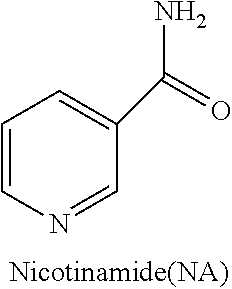Large scale production of retinal pigment epithelial cells
a retinal pigment and epithelial cell technology, applied in the field of large-scale production of retinal pigment epithelial cells, can solve the problems of limited widespread use of these donor sources, limited pigmented cell yield, labor-intensive and time-consuming current protocols for the derivation of rpe cells from pluripotent stem cells,
- Summary
- Abstract
- Description
- Claims
- Application Information
AI Technical Summary
Benefits of technology
Problems solved by technology
Method used
Image
Examples
example 1
[0211]Materials and Methods
[0212]Short Protocol
[0213]Preparation of Conditioned Medium:
[0214]T75 flasks were seeded with irradiated cord cells (2.3×106 w / o gelatin) in DMEM+20% Human serum medium. After 5-24 hr, the medium was replaced with Nutristem+HSA for conditioning. After 16 to 72 hour of conditioning the medium was harvested and replaced by fresh medium. According to this methodology, sequential conditioning of medium could be performed 3-4 times per week.
[0215]Culture of hESCs in Conditioned Medium (Experiments CM 1, 3, 4):
[0216]hESC colonies (day 8) of four center-well plates were treated with collagenase A, harvested and gently triturated. The hESCs were seeded in T75 flask coated with gelatin and cultured with conditioned medium from the cord flask. The conditioned medium was replaced every 1-3 days. After 6-7 days the flask was full with hESC colonies, which were harvested with collagenase A, to form purified culture of feeder free SBs.
[0217]Expansion of hESCs (Experimen...
PUM
| Property | Measurement | Unit |
|---|---|---|
| morphology | aaaaa | aaaaa |
| time | aaaaa | aaaaa |
| cell mass | aaaaa | aaaaa |
Abstract
Description
Claims
Application Information
 Login to View More
Login to View More - R&D
- Intellectual Property
- Life Sciences
- Materials
- Tech Scout
- Unparalleled Data Quality
- Higher Quality Content
- 60% Fewer Hallucinations
Browse by: Latest US Patents, China's latest patents, Technical Efficacy Thesaurus, Application Domain, Technology Topic, Popular Technical Reports.
© 2025 PatSnap. All rights reserved.Legal|Privacy policy|Modern Slavery Act Transparency Statement|Sitemap|About US| Contact US: help@patsnap.com



